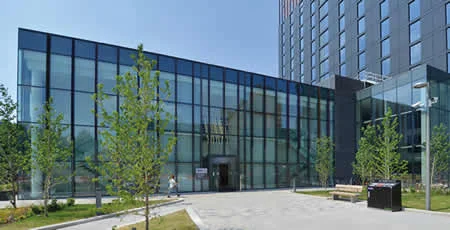Voice for All
Staff networks are an underused tool in diversity strategies.
Diversity management has come to the forefront of the recruitment and retention strategies for many organisations, so much so that Equality, Diversity and Inclusion (EDI) directorates are being made independent of HR departments.
However staff networks, also known as employee resource groups (ERGs), are an underrated and underused tool in the diversity strategy of many organisations. Staff networks are units run and made up of employees who share a common background in terms of their ethnicity, gender, sexual orientation or disability, and often serve as a voice for otherwise silent minorities.
Although groups based on these identity characteristics are the most common manifestation of staff networks, some larger organisations also have groups based on other characteristics such as faith or age. For instance, Greyglers is a staff network at Google for ‘employees of a certain age’.
Our ongoing research project, based on interviews from staff network chairs, EDI leads and HR managers, has specifically been exploring staff networks for women and for ethnic minority employees in the UK, but our findings are equally applicable to other types of staff networks too.
How can both employers and employees maximise the potential of staff networks?
Our research has identified six key themes:
- Clarity of goals
Although the first mention of staff networks in literature was as far back as 1964, and our own research points to ERG’s existing in the UK since the 1990s, many staff networks do not have defined goals. This may lead staff network meetings being reduced to just a space for employees to air grievances. Although providing a safe space for dialogue is a key purpose of staff networks, these mechanisms are more beneficial to employees and employers if they focus on agreed upon goals to address concrete issues. - Passionate leadership
Well-run staff networks have passionate chairs who fuel the group with their passion and energy. This is a double-edged sword, though, as the network may be too reliant on a popular figurehead, preventing sound succession planning and continuity of staff networks. A way of overcoming these risks is having a sub-group of core members who are equally passionate about equality issues that help in the running of the network. - Productive relationships
In principle, staff networks should be independent of the EDI and HR directorate. However, a healthy relationship and boundaries amongst these units are important. It is a balancing act for HR where they shouldn’t impose a reporting relationship for staff networks, but at the same time should work with them collaboratively to address common concerns. For example, staff network members can agree to invite HR to some of their meetings, especially where strategic issues are being discussed. - Top management as champions
Top management support is key to staff network success and our study points to the idea that effective staff networks have executive sponsors or champions. They may not participate in the day to day running of the network, but their support is essential in the groups getting visibility in the boardroom and for recognition as a legitimate voice channel. In addition, conferring time and funding budgets is also a function of top management involvement. - Go beyond ‘performative’ events
Almost all staff networks in our study conduct some events celebrating special occasions for their minority groups. As important as these events are for visibility for these groups, unless the groups work towards actually improving the work lives of minoritised groups, they may not get much purchase from members in the long run, impacting the legitimacy of these groups. - Establish formal mechanisms
Many staff networks in our study did not have formal terms of reference and in many cases the meetings were infrequent and different staff networks enjoyed varied budgets and support. In order for staff networks to realise their full potential, chairs, members and HR need to agree on not just the goals but standard operating procedures that govern their functions. Moreover, there needs to be dialogue about where these networks fit within the organisation structure in general and voice channels in particular.
Since research on staff networks in still in its nascent stages we need to learn more about these networks. Each organisation and network will invariably need to experiment and learn from their experience and work with arrangements that work for them and their employees, but these guiding principles can be a starting point.





